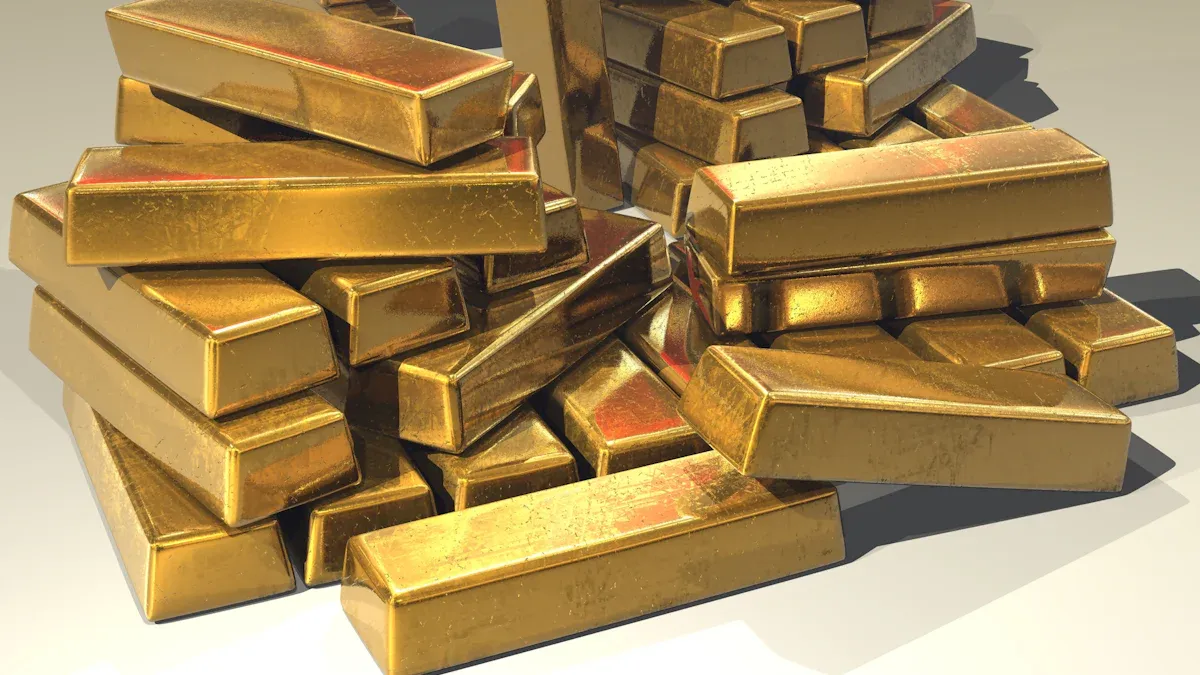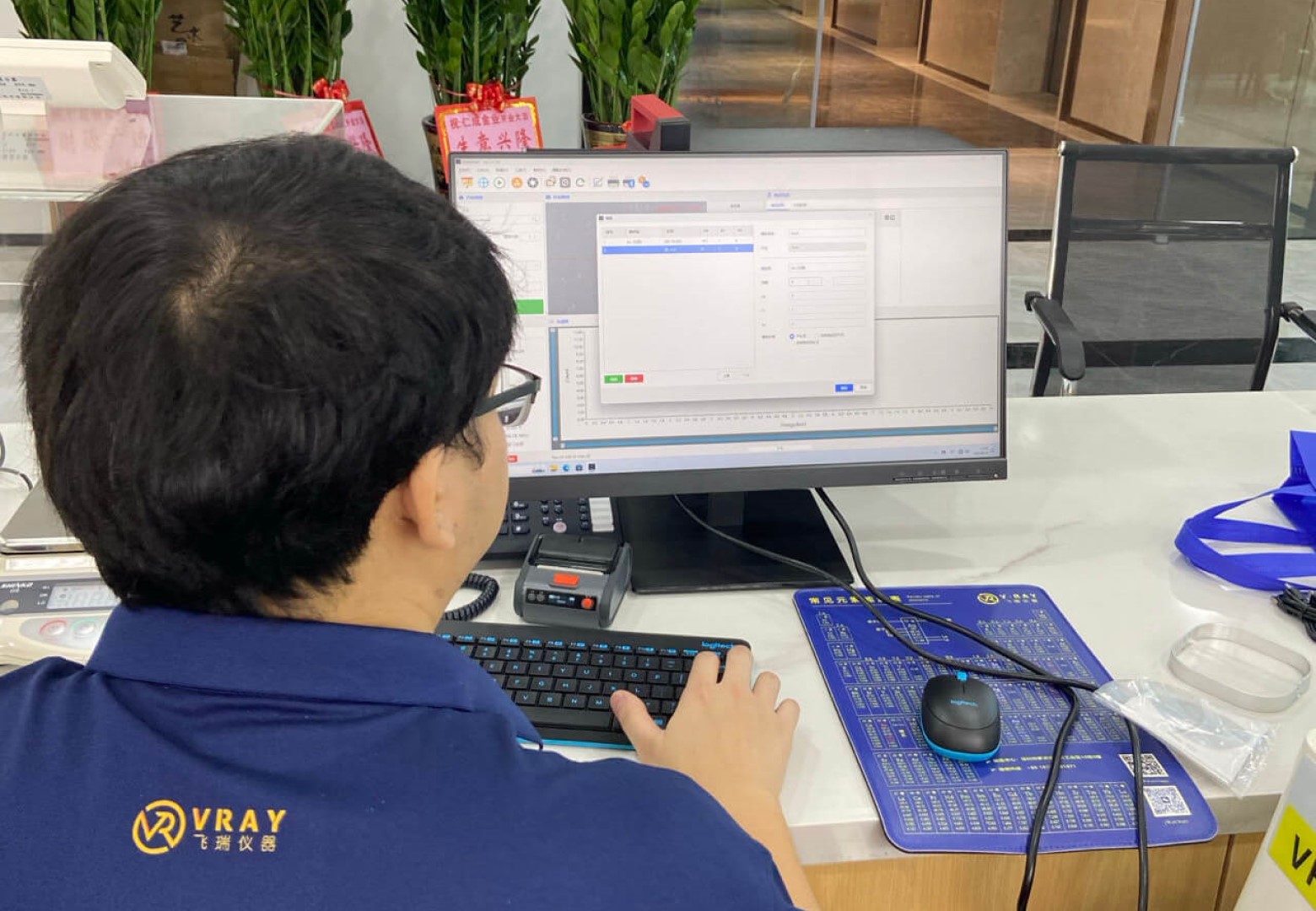How Do You Analyze XRF Results for Gold?
When using an XRF gold tester, the analysis process begins the moment the sample is scanned and the instrument returns its composition. Interpreting the results accurately is key to understanding the purity of gold and identifying other metals that may be present in the sample. Most XRF gold analyzers present results as a percentage of each element found. For example, a reading of Au 91.7%, Ag 5.0%, Cu 3.3% means the gold purity is 91.7%, or 22 karats.

How to Quickly Analyze XRF Gold Test Results
The first step in analyzing XRF results for gold is to identify the gold content (Au) on the result screen. If the result shows a single, dominant percentage for gold and minimal other metals, it is likely to be high-purity gold. However, if there are significant readings for silver (Ag), copper (Cu), nickel (Ni), or other elements, the gold item may be alloyed — which is common in jewelry and coins.
Different industries set specific standards for gold purity — such as 24K (99.9% gold), 22K (91.7%), or 18K (75%). By comparing the XRF result to these standards, users can immediately determine whether the item meets quality expectations.
Accuracy in reading these values depends on proper testing conditions, a well-calibrated machine, and the right selection of sample area. High-end XRF machines, like those from VRAY Instruments, provide not only the composition but also enable users to compare spectra or generate detailed reports for documentation or resale.
Key Factors to Consider When Interpreting XRF Gold Test Results
1. Gold Purity Detection
The gold content (Au) is the most critical value. XRF results are usually presented in percentage (%) or parts per thousand (‰). For example, 999, 916, or 750 are often used to represent 24K, 22K, and 18K respectively.
Ensure that:
- The percentage of Au is consistent across multiple tests.
- There are no suspiciously high readings of elements like Fe, Zn, or Pb, which may indicate gold-plated or counterfeit items.
2. Presence of Alloying Elements
Common alloying metals include:
- Silver (Ag) – used to lighten color and hardness
- Copper (Cu) – used to deepen red tones
- Nickel (Ni) – sometimes used in white gold
- Palladium (Pd), Platinum (Pt), Rhodium (Rh) – high-end applications
Knowing the percentage of these metals helps to determine:
- The exact karat rating of the item
- Whether the piece is genuine, plated, or counterfeit
- Suitability for resale or recycling
3. Testing Surface vs. Core
XRF is a surface analysis technique. If you’re testing plated items, the gold layer on the surface may show high purity, even though the base metal is different. In such cases:
- Test multiple areas of the item.
- If possible, polish a small area to access the core material.
- Use instruments with depth profiling capabilities if available.
4. Signal Stability and Calibration
For the most accurate results:
- Allow the machine to warm up fully before use.
- Ensure the calibration is up to date.
- Use consistent sample positioning and test time settings.
Why Professionals Choose VRAY for Accurate Gold Analysis

VRAY Instruments offers a comprehensive range of high-performance XRF gold testers tailored for various industries — from jewelry shops to gold recycling, manufacturing, and quality inspection labs.
✅ VR-X5 — Best for Jewelry Stores & Refiners
This advanced analyzer features a built-in computer, Si-PIN detector, and intuitive touch interface. It can detect over 20 elements, offering fast, lab-grade accuracy in a compact design.
✅ VR-T9 — Engineered for Ultra-High Purity Gold (99999)
Specially developed for industries that demand the highest accuracy (±0.001%), the VR-T9 features customizable reports, automatic aging protection, and spectrum comparison tools.
✅ VR-H5 — Portable Handheld Gold Testing
Ideal for mobile operations and field-based gold buying, this rugged device offers instant purity results, gravity sensor safety, and a user-friendly interface — all in your palm.
✅ VR-M5 — Compact Yet Powerful
For users who need reliable results on the go, the VR-M5 combines Si-PIN accuracy, smart battery life, and touchscreen simplicity, making it perfect for jewelry recycling or pawnshops.
Whether you’re running a gold refining operation or a pawnshop that needs to authenticate gold in seconds, VRAY’s lineup offers a solution that fits your needs.
Recommendations for Getting the Most Accurate Gold Results
1.Use the Right Machine for Your Use Case
For lab-level analysis and advanced spectrum control, choose benchtop models like VR-X5 or VR-T9. For fieldwork, go with portable options like the VR-H5 or VR-M5.
2.Test Multiple Areas of the Sample
Especially for irregular or plated objects — test more than one point for a complete picture of the metal content.
3.Keep the Analyzer Calibrated
Regular calibration ensures accuracy and reliability, especially when testing a wide range of materials.
4.Take Advantage of Report Features
Models like VR-T9 allow you to customize reports for resale, auditing, or traceability.
5.Avoid Testing Through Plastic or Glass
Ensure the surface is clean and in direct contact with the X-ray beam.
Frequently Asked Questions
Q1:What does it mean if my gold test result shows 91.6% Au?
A1:This corresponds to 22K gold. The remaining 8.4% could be alloying metals like silver or copper.
Q2:Can XRF detect fake gold or gold plating?
A2:Yes, XRF can detect surface-level plating. Testing multiple spots or scraping a small area can help reveal the core metal underneath.
Q3:How accurate are handheld XRF gold testers?
A3:High-quality devices like VR-H5 or VR-M5 offer accuracy suitable for most commercial applications, typically within ±0.1%. For critical cases, use benchtop models with ±0.001% accuracy.
Q4:What are the advantages of using VRAY XRF analyzers over others?
A4:VRAY products combine high-precision detectors, user-friendly software, and durable design — ideal for professionals in gold testing, recycling, and manufacturing.
Q5:How can I tell if a piece of gold jewelry has been alloyed or is pure?
A5:Analyze the XRF results. Pure gold will show over 99.9% Au. Any significant percentage of other metals like Cu or Ag indicates it’s an alloy.

WhatsApp
Scan the QR Code to start a WhatsApp chat with us.